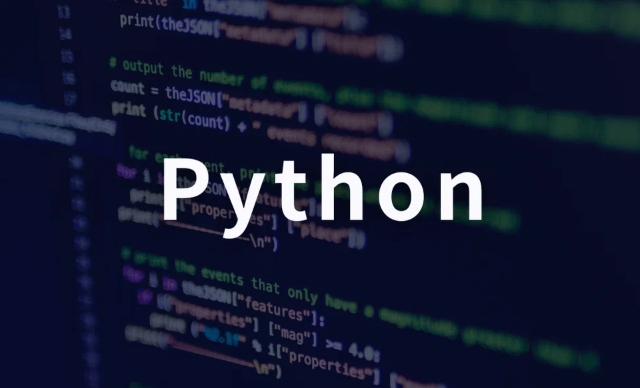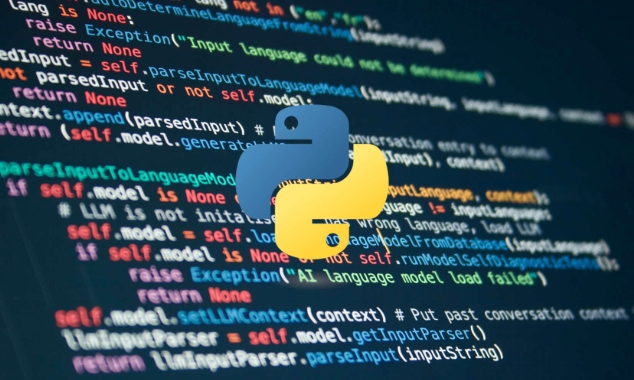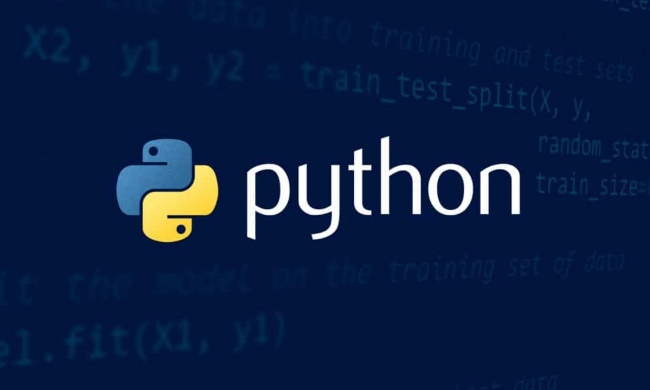To improve Python code performance, benchmarking should be conducted in advance to find bottlenecks. 1. Use the timeit module to quickly measure small pieces of code, and reduce errors by running multiple times; 2. Use cProfile to analyze the performance distribution of the entire program, and combine the pstats module to filter the most time-consuming functions; 3. Avoid misunderstandings such as running only once, ignoring the I/O impact, premature optimization, etc., and ensure the consistent test environment; 4. Use third-party tools such as Py-Spy, line_profiler and memory_profiler to achieve finer granular performance analysis and memory monitoring.

When writing Python code, performance problems are often ignored, and the program does not start looking for the cause until it runs slowly. In fact, doing a little benchmarking in advance can help you find bottlenecks and avoid major changes in the later stage. The key is not to pursue extreme optimization, but to find a place that truly affects efficiency.

Use timeit to quickly test small code
If you just want to see how long a small piece of code will last, the timeit module is the most direct choice. It will automatically run multiple times to average the value to reduce errors. For example, you want to compare the speed of two list generation methods:
import timeit
# Test list comprehension time1 = timeit.timeit('[x**2 for x in range(100)]', number=10000)
# Test normal loop time2 = timeit.timeit('list(map(lambda x: x**2, range(100)))', number=10000)
print(f"list comprehension time-consuming: {time1:.4f}s")
print(f"map lambda time-consuming: {time2:.4f}s")This method is suitable for measuring functions, expressions, or algorithm fragments, but not for the entire script or complex process.

Use cProfile for comprehensive analysis
When you need to look at the performance distribution of the entire program, such as which function calls the most and which part consumes the most time, you need to use cProfile . It can tell you how much time it takes for each step, which is great for finding performance bottlenecks.
For example, suppose you have a main function main(), you can run it like this:

python -m cProfile my_script.py
The output result will list the number of calls to each function, the total time spent, the average time spent each time, and other information. If you want to see the data more intuitively, you can also combine pstats module sorting and filtering:
python -m cProfile -o output.prof my_script.py python -m pstats output.prof
Then enter sort time or stats 10 in the interactive interface to view the top 10 items that take the most time.
Avoid common misunderstandings and make the test more accurate
- Don't run only once : a single run is easily affected by system load, cache and other factors. It is more reliable to run a few more times to get the average.
- Note I/O and external dependencies : If the code involves disk read and write, network requests, the test results may be unstable. You can consider mocking these parts.
- Don't optimize too early : write clear and maintainable code first, and then make adjustments based on actual performance issues.
- The environment must be consistent : different machines, different Python versions, and even different virtual environments may affect the test results.
Improve efficiency with third-party tools
In addition to the standard library, there are several useful third-party tools that are worth trying:
- Py-Spy : a non-invasive performance analysis tool, you can see the call stack and hotspot functions without modifying the code.
- line_profiler : Analyze the execution time of a function at the row level, suitable for fine-grained optimization.
- memory_profiler : Not only time, it can also view memory usage and help you discover memory leaks.
After installation, it can be used with the decorator, such as:
pip install line_profiler
Then add a decorator to the code:
@profile
def my_func():
a = [1] * (10**6)
b = [2] * (10**6)
c = [a[i] b[i] for i in range(len(a))]Run the command:
kernprof -l -v your_script.py
Basically that's it. Benchmarking is not the more complex the better. The key is to choose the right tool, see the problem clearly, and make reasonable judgments.
The above is the detailed content of Benchmarking Python Code Performance. For more information, please follow other related articles on the PHP Chinese website!

Hot AI Tools

Undress AI Tool
Undress images for free

Undresser.AI Undress
AI-powered app for creating realistic nude photos

AI Clothes Remover
Online AI tool for removing clothes from photos.

Clothoff.io
AI clothes remover

Video Face Swap
Swap faces in any video effortlessly with our completely free AI face swap tool!

Hot Article

Hot Tools

Notepad++7.3.1
Easy-to-use and free code editor

SublimeText3 Chinese version
Chinese version, very easy to use

Zend Studio 13.0.1
Powerful PHP integrated development environment

Dreamweaver CS6
Visual web development tools

SublimeText3 Mac version
God-level code editing software (SublimeText3)

Hot Topics
 Polymorphism in python classes
Jul 05, 2025 am 02:58 AM
Polymorphism in python classes
Jul 05, 2025 am 02:58 AM
Polymorphism is a core concept in Python object-oriented programming, referring to "one interface, multiple implementations", allowing for unified processing of different types of objects. 1. Polymorphism is implemented through method rewriting. Subclasses can redefine parent class methods. For example, the spoke() method of Animal class has different implementations in Dog and Cat subclasses. 2. The practical uses of polymorphism include simplifying the code structure and enhancing scalability, such as calling the draw() method uniformly in the graphical drawing program, or handling the common behavior of different characters in game development. 3. Python implementation polymorphism needs to satisfy: the parent class defines a method, and the child class overrides the method, but does not require inheritance of the same parent class. As long as the object implements the same method, this is called the "duck type". 4. Things to note include the maintenance
 Python Function Arguments and Parameters
Jul 04, 2025 am 03:26 AM
Python Function Arguments and Parameters
Jul 04, 2025 am 03:26 AM
Parameters are placeholders when defining a function, while arguments are specific values ??passed in when calling. 1. Position parameters need to be passed in order, and incorrect order will lead to errors in the result; 2. Keyword parameters are specified by parameter names, which can change the order and improve readability; 3. Default parameter values ??are assigned when defined to avoid duplicate code, but variable objects should be avoided as default values; 4. args and *kwargs can handle uncertain number of parameters and are suitable for general interfaces or decorators, but should be used with caution to maintain readability.
 Explain Python generators and iterators.
Jul 05, 2025 am 02:55 AM
Explain Python generators and iterators.
Jul 05, 2025 am 02:55 AM
Iterators are objects that implement __iter__() and __next__() methods. The generator is a simplified version of iterators, which automatically implement these methods through the yield keyword. 1. The iterator returns an element every time he calls next() and throws a StopIteration exception when there are no more elements. 2. The generator uses function definition to generate data on demand, saving memory and supporting infinite sequences. 3. Use iterators when processing existing sets, use a generator when dynamically generating big data or lazy evaluation, such as loading line by line when reading large files. Note: Iterable objects such as lists are not iterators. They need to be recreated after the iterator reaches its end, and the generator can only traverse it once.
 Python `@classmethod` decorator explained
Jul 04, 2025 am 03:26 AM
Python `@classmethod` decorator explained
Jul 04, 2025 am 03:26 AM
A class method is a method defined in Python through the @classmethod decorator. Its first parameter is the class itself (cls), which is used to access or modify the class state. It can be called through a class or instance, which affects the entire class rather than a specific instance; for example, in the Person class, the show_count() method counts the number of objects created; when defining a class method, you need to use the @classmethod decorator and name the first parameter cls, such as the change_var(new_value) method to modify class variables; the class method is different from the instance method (self parameter) and static method (no automatic parameters), and is suitable for factory methods, alternative constructors, and management of class variables. Common uses include:
 How to handle API authentication in Python
Jul 13, 2025 am 02:22 AM
How to handle API authentication in Python
Jul 13, 2025 am 02:22 AM
The key to dealing with API authentication is to understand and use the authentication method correctly. 1. APIKey is the simplest authentication method, usually placed in the request header or URL parameters; 2. BasicAuth uses username and password for Base64 encoding transmission, which is suitable for internal systems; 3. OAuth2 needs to obtain the token first through client_id and client_secret, and then bring the BearerToken in the request header; 4. In order to deal with the token expiration, the token management class can be encapsulated and automatically refreshed the token; in short, selecting the appropriate method according to the document and safely storing the key information is the key.
 What are Python magic methods or dunder methods?
Jul 04, 2025 am 03:20 AM
What are Python magic methods or dunder methods?
Jul 04, 2025 am 03:20 AM
Python's magicmethods (or dunder methods) are special methods used to define the behavior of objects, which start and end with a double underscore. 1. They enable objects to respond to built-in operations, such as addition, comparison, string representation, etc.; 2. Common use cases include object initialization and representation (__init__, __repr__, __str__), arithmetic operations (__add__, __sub__, __mul__) and comparison operations (__eq__, ___lt__); 3. When using it, make sure that their behavior meets expectations. For example, __repr__ should return expressions of refactorable objects, and arithmetic methods should return new instances; 4. Overuse or confusing things should be avoided.
 How does Python memory management work?
Jul 04, 2025 am 03:26 AM
How does Python memory management work?
Jul 04, 2025 am 03:26 AM
Pythonmanagesmemoryautomaticallyusingreferencecountingandagarbagecollector.Referencecountingtrackshowmanyvariablesrefertoanobject,andwhenthecountreacheszero,thememoryisfreed.However,itcannothandlecircularreferences,wheretwoobjectsrefertoeachotherbuta
 Describe Python garbage collection in Python.
Jul 03, 2025 am 02:07 AM
Describe Python garbage collection in Python.
Jul 03, 2025 am 02:07 AM
Python's garbage collection mechanism automatically manages memory through reference counting and periodic garbage collection. Its core method is reference counting, which immediately releases memory when the number of references of an object is zero; but it cannot handle circular references, so a garbage collection module (gc) is introduced to detect and clean the loop. Garbage collection is usually triggered when the reference count decreases during program operation, the allocation and release difference exceeds the threshold, or when gc.collect() is called manually. Users can turn off automatic recycling through gc.disable(), manually execute gc.collect(), and adjust thresholds to achieve control through gc.set_threshold(). Not all objects participate in loop recycling. If objects that do not contain references are processed by reference counting, it is built-in






